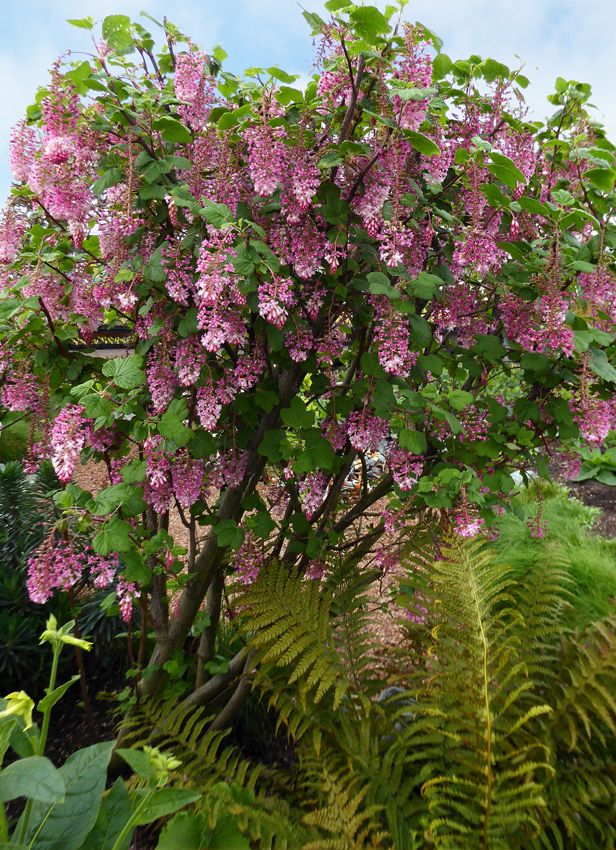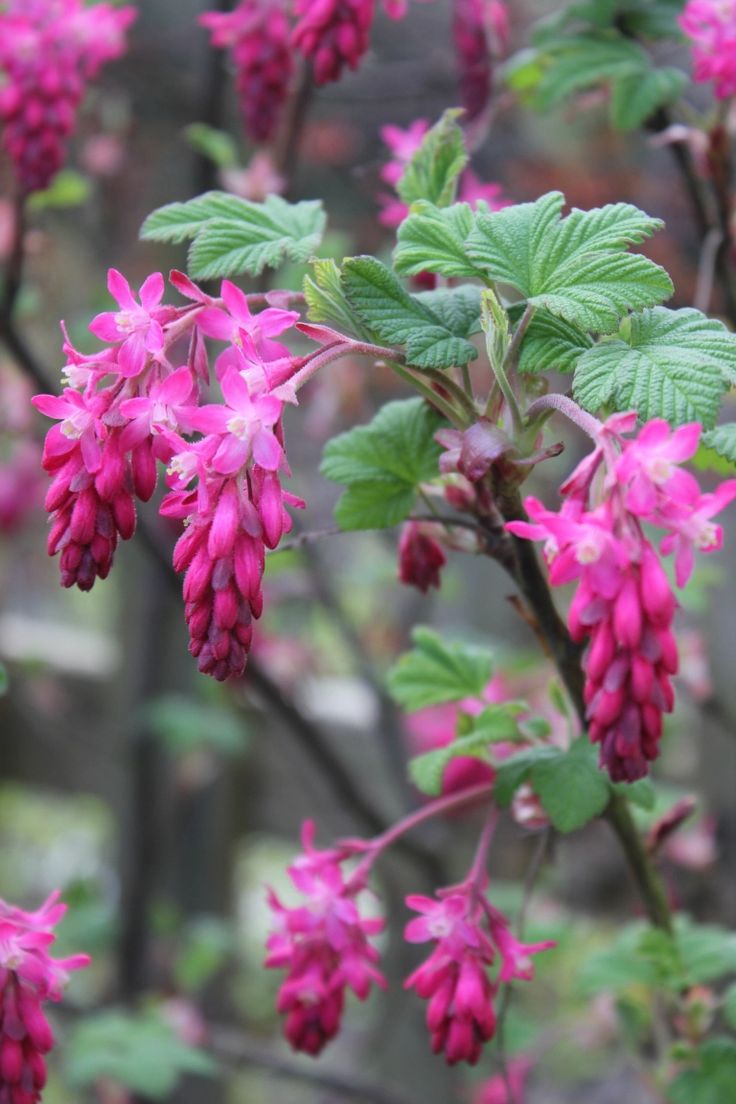Ribes sanguineum

Ribes sanguineum, commonly known as Red-flowering Currant, is a captivating deciduous shrub native to western North America.
Renowned for its clusters of vibrant pink to red flowers, early spring blooms, and ecological significance, Red-flowering Currant holds a special place in both natural landcapes and cultivated gardens.
In this comprehensive article, we will delve into the botanical intricacies, habitat preferences, life cycle, ecological importance, conservation status, and care guidelines for Ribes sanguineum.
Botanical Description
Red-flowering Currant is a deciduous shrub belonging to the Grossulariaceae family, characterized by its arching branches, lobed leaves, and showy flower clusters.
The leaves are palmately lobed, with three to five deep lobes, and emerge in a fresh green color in spring, turning yellow or red in autumn before falling off for the winter.
One of the most striking features of Red-flowering Currant is its flowers, which bloom profusely in early spring before the leaves emerge.
The flowers are borne in pendulous clusters along the branches and range in color from pale pink to deep red, depending on the cultivar.
The flowers are highly attractive to bees, butterflies, and hummingbirds, making Red-flowering Currant a valuable addition to pollinator gardens.
Habitat and Distribution
Red-flowering Currant is native to a variety of habitats, including mixed evergreen forests, riparian areas, and coastal scrub, where it thrives in moist, well-drained soils and partial to full sunlight.
Occurs along the western coast of North America, enhancing the early spring landscape from British Columbia to California.
Red-flowering Currant frequently grows beneath taller trees or beside stream banks, thriving in filtered sunlight and abundant moisture.
Life Cycle and Phenology
As a deciduous shrub, Red-flowering Currant follows a typical life cycle for temperate woody plants.
Growth occurs primarily in spring and summer, with new leaves and flowers emerging from dormant buds in response to increasing daylight and temperatures.
Flowering typically occurs in early spring, before the leaves fully expand, allowing the colorful blossoms to stand out against the bare branches.
Pollination is primarily carried out by bees, which are attracted to the flowers' nectar and pollen. Following pollination, the shrub produces small berries, which ripen in late summer to early fall, providing a valuable food source for birds and other wildlife.
Red-flowering Currant may undergo periods of dormancy in winter, shedding its leaves and conserving energy until the arrival of warmer temperatures in spring.
Ecological and Cultural Importance
Red-flowering Currant plays a significant ecological role as a habitat provider, food source, and pollinator attractor in native plant communities.
The flowers attract a variety of pollinators, including bees, butterflies, and hummingbirds, contributing to the health and diversity of local ecosystems.
Additionally, the berries are consumed by birds and mammals, serving as an important food source during the summer and fall months.
Red-flowering Currant also has cultural importance among indigenous peoples of North America, who have long used the plant for medicinal, culinary, and ceremonial purposes.
Landscapers and horticulturists value Red-flowering Currant for its ornamental qualities, including colorful flowers, attractive foliage, and appeal to wildlife.
Despite not being listed as threatened or endangered, Red-flowering Currant confronts conservation challenges from habitat loss, urbanization, and invasive species.

Caring for Ribes sanguineum
Sunlight
Plant Red-flowering Currant in a location that receives partial to full sunlight, as it prefers abundant sunlight for optimal growth and flowering.
Watering
Provide regular water during the establishment period, then gradually reduce watering once the shrub is established.
Red-flowering Currant is moderately drought tolerant once established and prefers well-drained soil.
Soil
Plant in moist, well-drained soil with a neutral to slightly acidic pH.
Red-flowering Currant is adaptable to a variety of soil types but prefers soil with good drainage.
Pruning
Prune lightly after flowering to maintain a balanced and attractive shape, removing any dead, damaged, or crossing branches.
Avoid heavy pruning, as this can impact flowering and overall shrub health.
Mulching
Apply a layer of organic mulch, such as wood chips or compost, around the base of the shrub to help retain soil moisture and suppress weeds.
Avoid piling mulch against the trunk, as this can lead to rot and disease.
By following these care guidelines, you can cultivate healthy and vibrant Red-flowering Currant shrubs in your garden or landscape, contributing to the conservation of native plant species and the beauty of the western North American landscape.
Whether grown as a specimen shrub, hedge, or wildlife habitat, Red-flowering Currant is sure to enchant with its colorful flowers, attractive foliage, and ecological significance.
Leave a Reply
You must be logged in to post a comment.